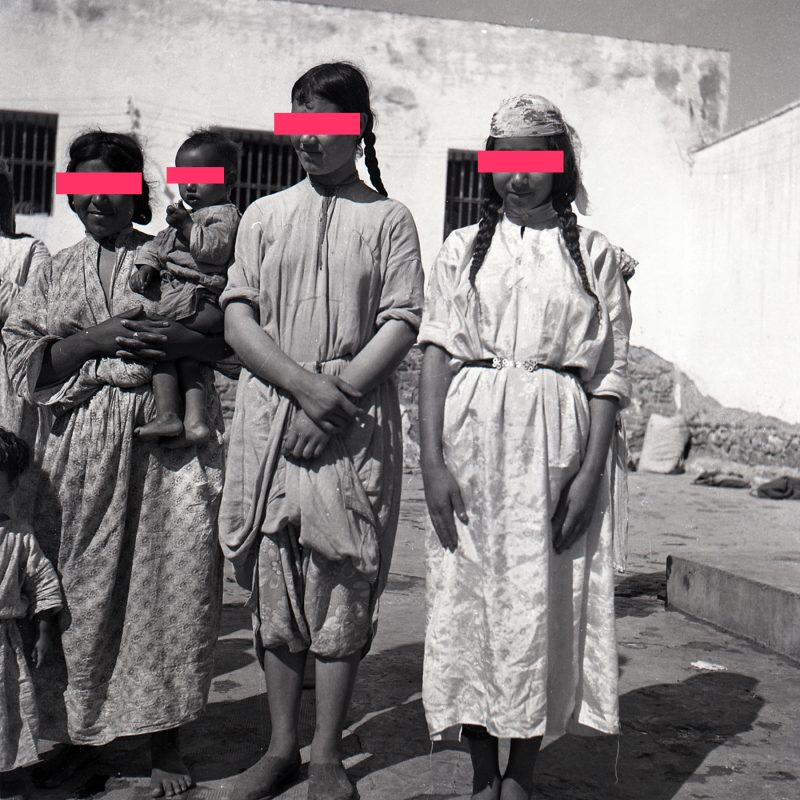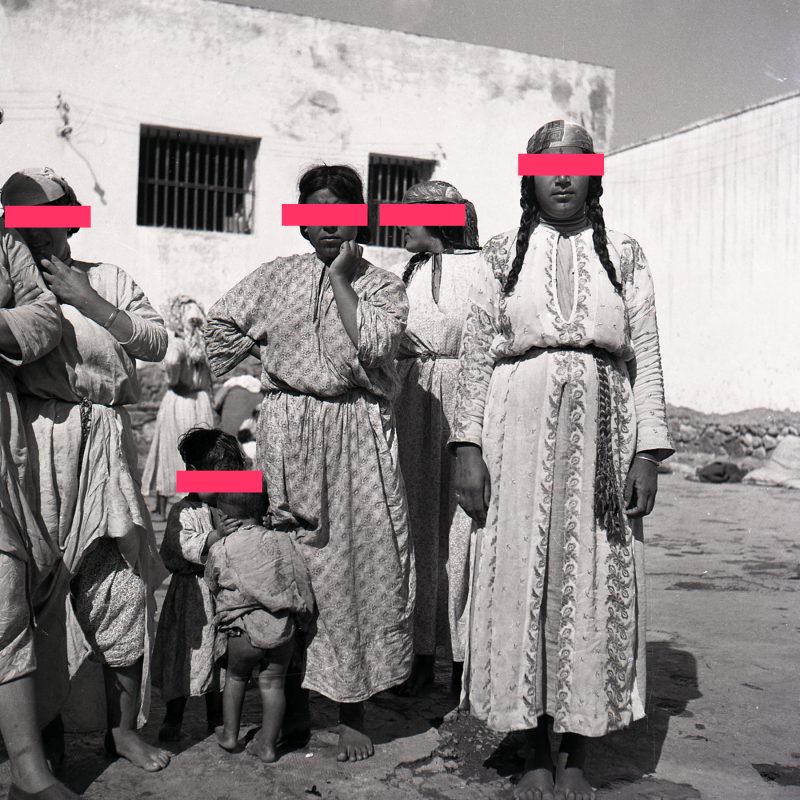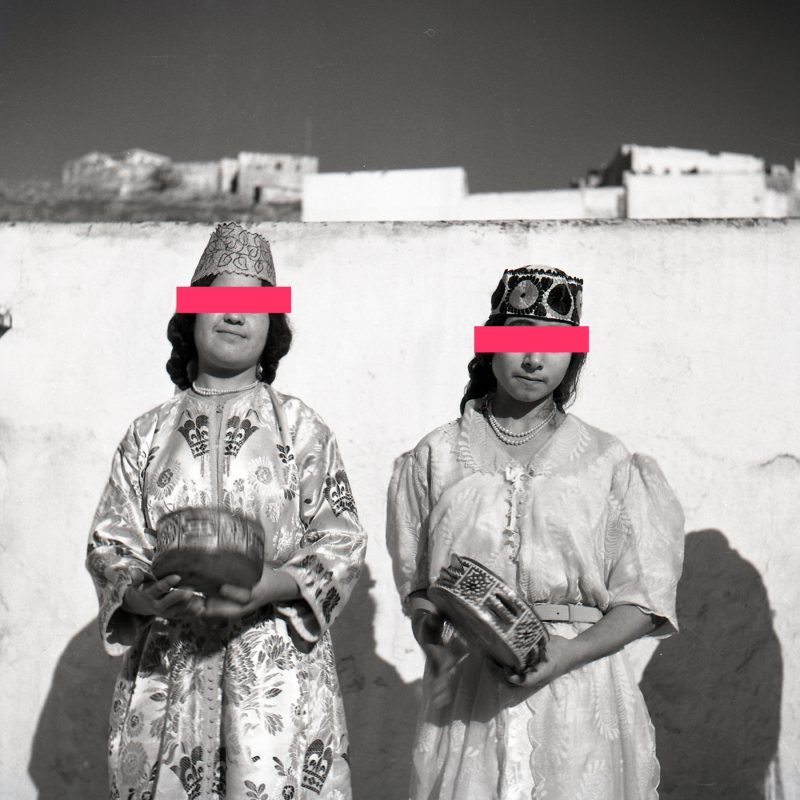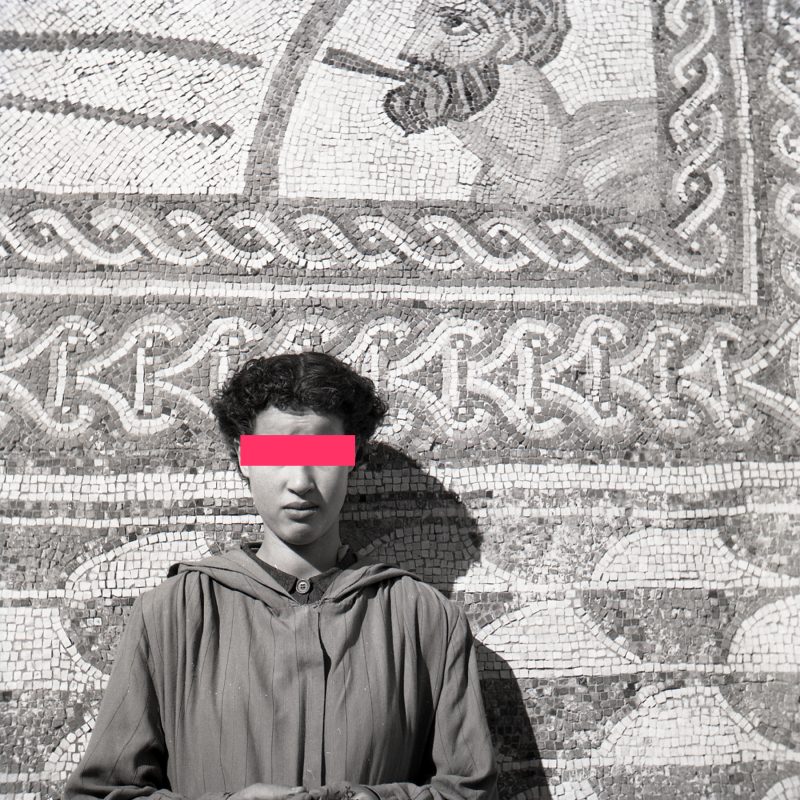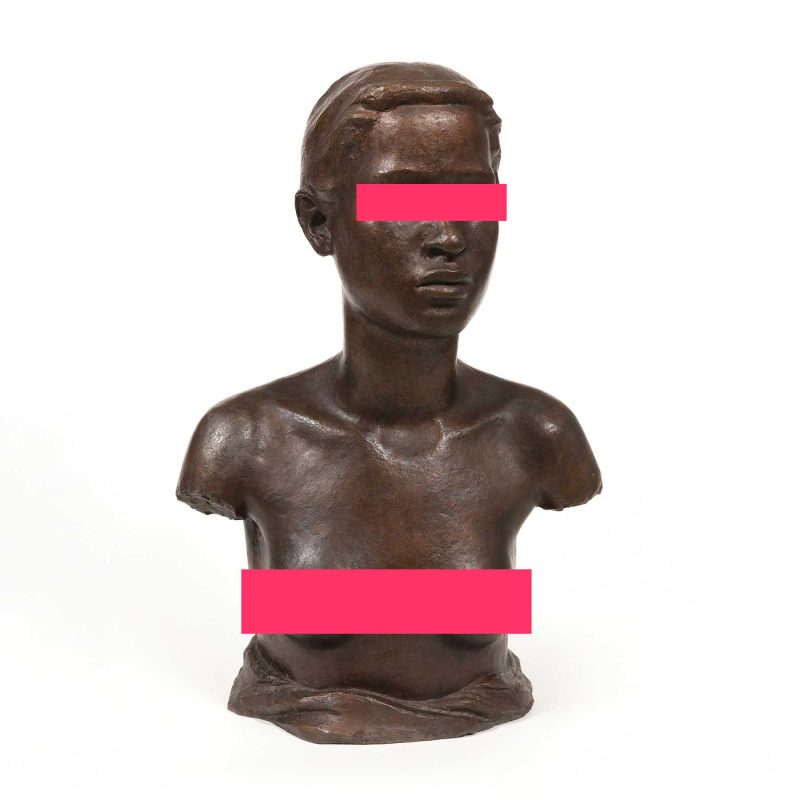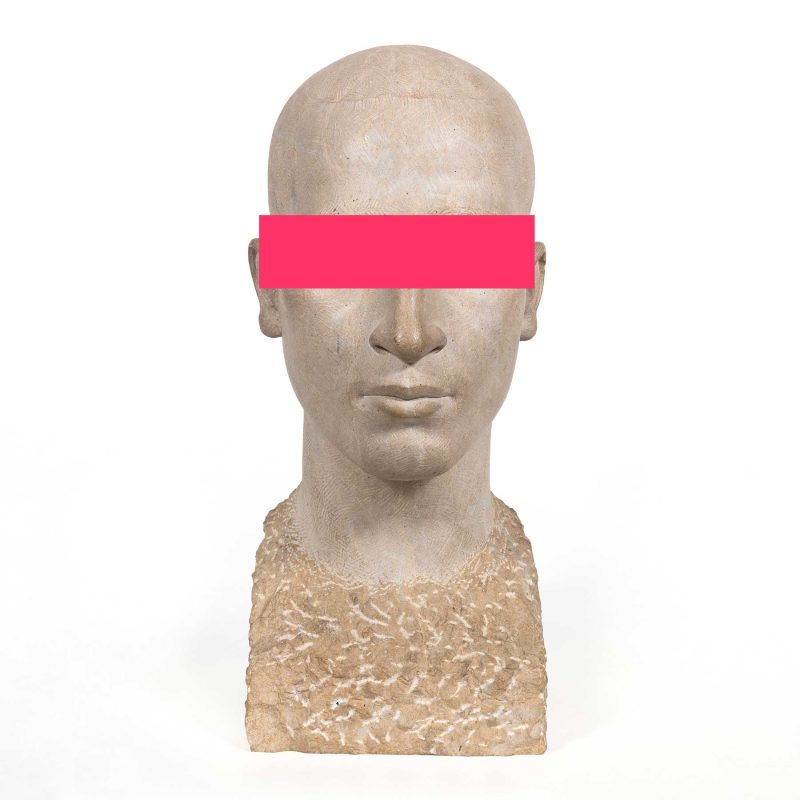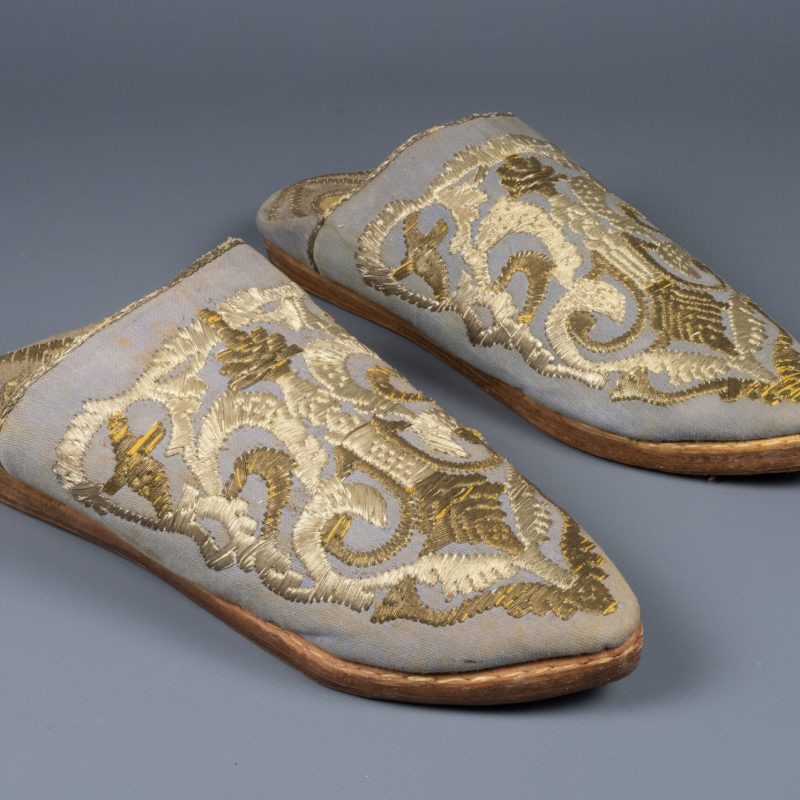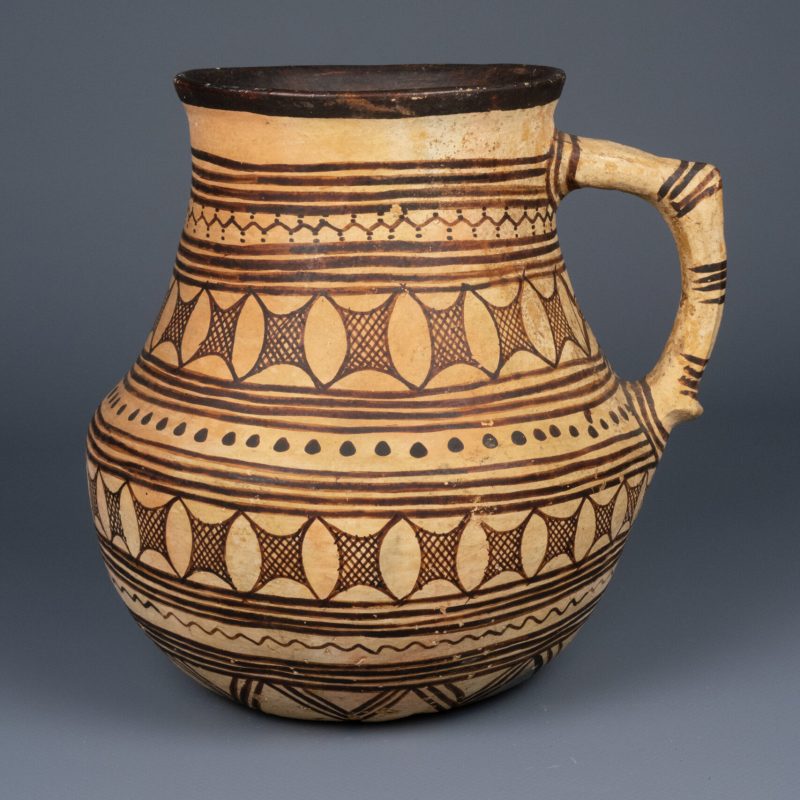Summary of results
This is a Fatima hand acquired by August Panyella and Eudald Serra during the 1952 expedition, specifically on 22 October 1952. It was purchased for 230 pesetas at the Atlas Bazar of the merchant Ahmed R’Kaina, in Tétouan. This is a shop selling handicrafts, fabrics, antiques, and other similar items, which was visited on many occasions during the museum’s expeditions to the Spanish Protectorate in Morocco.
Chronological reconstruction of provenance
It seems that about eight Fatima hands were purchased during the first expedition in 1952, according to the hand-written inventories in the field diary (although the Excel inventories provided by the museum show nine from this expedition). Throughout the trip, reference is made to these acquisitions in different souks, but there is a coincidence on 22 October 1952, when we are told of an offer on purchases (five thousand pesetas) made in the Atlas Bazaar of Ahmed R’Kaina, in Tétouan, where ‘carpets, tapestries of all kinds, leather goods, worked metals, and antiques’ are sold, according to the business card (MEB_L128_05_03).
On page 102 of the field notes there is a list of the purchases made, and among them there is a small list of Fatima’s hands, identified by some characteristic feature of the object. In this case the match is recognizable because it is described as ‘larger dragon hand’ (MEB_L128_05_02). No other Fatima hand in the MuEC inventory has a similar drawing.
Estimation of provenance
It is thought to have come from purchases made at the Atlas Bazaar of Ahmed R’Kaina in Tétouan. The handwritten list in the field notes which mentions this Fatima hand does not specify the exact price of the object, since it was part of a batch of items which, as noted in the notes, had a value of five thousand pesetas. However—if we assume that the inventory number of the MuEC corresponds to those of the supporting numbers, as is the case with the rest of the pieces—it is likely that it would have cost 230 pesetas.
Possible alternative classifications
No es perceben classificacions alternatives.
Complementary sources
Archives:
MEB_L128_05_02
MEB_L128_05_03
Bibliography:
López Bargados, A. i Martín López, S. (2022). Entre zocos e internados. Itinerarios y procedimientos en las expediciones del Museo Etnológico y Colonial de Barcelona al Protectorado español sobre Marruecos (1952-1956). Ajuntament de Barcelona.
Soriano, M. D. (2010). Historia, tradición y cultura: Las colecciones africanas del período colonial del Museu Etnològic de Barcelona. Dins Actes del 7è Congrés Ibèric de Estudis Africans (p. 1-20). Lisboa.

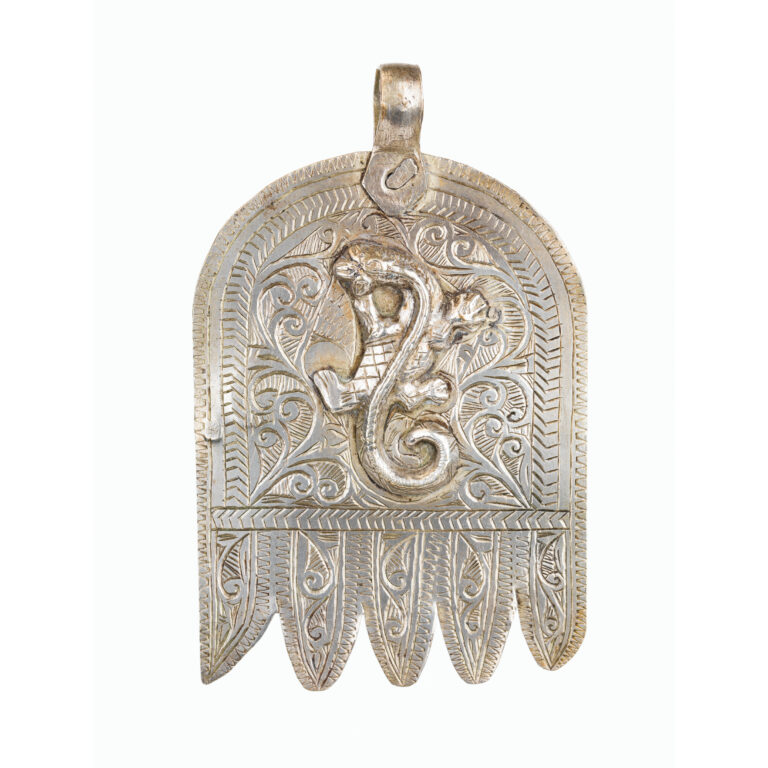
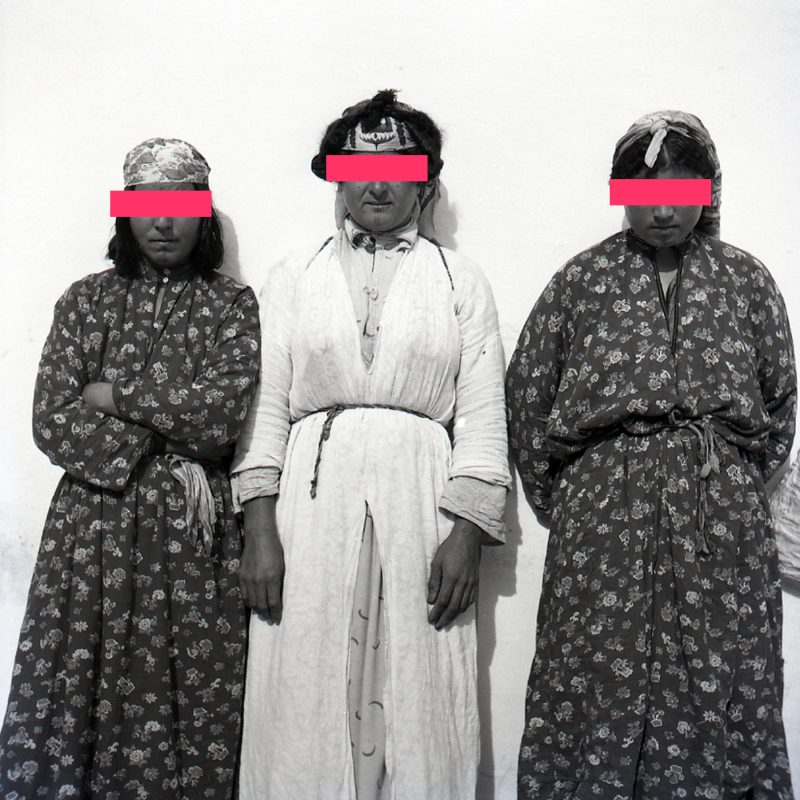
![2768v2 Sr. Serra modelant cap berber al taller del fotògraf [sic]; Xauen](https://trafricants.org/wp-content/uploads/elementor/thumbs/2768v2-1-r1s3naz0e9jpfdk332eci3myow1y18s3l4ttuptphc.jpg)
